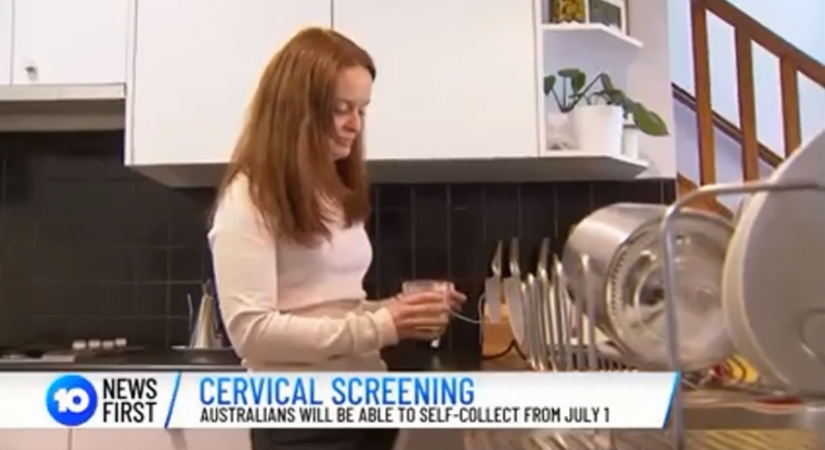Pathology Awareness Australia is urging Australians to catch up on cervical screening tests as national data shows screening participation is low, particularly in the 25-29 age group.
The National Cervical Screening Program monitoring report 2021 from the Australian Institute of Health and Welfare (AIHW) shows that of those invited for a screening test during 2020, only 20 per cent completed the test within 12 months1.
In the 25-29 age group, only 12 per cent of those invited to screen had their test.
The report estimates that overall only 62% of eligible people participated in the cervical screening program in 2018-2020.1
VIDEO: Professor Marion Saville speaking to Channel 7 Sunrise
While it is unclear how much of an impact the pandemic has had on cervical screening uptake, routine healthcare participation was significantly affected, with pathology testing rates dropping by around 40 per cent2 in the first months of COVID-19 restrictions.
Women aged 25-74 are recommended to have a cervical screening test every 5 years. The test looks for the Human Papillomavirus (HPV) known to cause the majority of cervical cancers.
In July 2022, self-collection of samples for cervical screening tests has become available to all people with a cervix aged 25-74. This means patients will no longer need their doctor or nurse to insert a speculum to collect the cervical sample.
On behalf of Pathology Awareness Australia, Professor Marion Saville AM said: “Australians need to be aware that prevention of cervical cancer requires regular screening as well as HPV vaccination for those who are eligible. Young people who have been vaccinated are not protected against every type of HPV so still need to be tested.”
Anyone who is unsure if they are due for a cervical screening test can ask their healthcare provider to check the National Cancer Screening Register to find out their status.
VIDEO: Prof Marion Saville speaking on 10 News
Prof Saville added; “HPV is a very common virus and most adults who are sexually active will be exposed to it during their lifetime. HPV can cause changes in the cells that lead to cancer. If this isn’t picked up early it can require more invasive treatment that can affect reproductive choices and of course in the worst cases, cervical cancer can be fatal.
From this month, people will be able to collect their own sample from the vagina using a small swab for their cervical screening test. We hope that this encourages more people to come forward for screening.”
The test is now only required every 5 years (for those testing negative to HPV) and is recommended for anyone with a cervix who is sexually active, aged between 25-74.
The National Cervical Screening Program changed to a 5 yearly cycle from a 2 yearly cycle in December 2017.
Before the pandemic, Australia was leading in cervical cancer elimination due to prevention measures. A 2018 study in The Lancet noted that with a combination of screening and vaccination, Australia could be one of the first countries in the world to eliminate cervical cancer as a public health problem and could do so by 2035.3
Liz Ham, National Health Promotion Manager at Australian Cervical Cancer Foundation said:
“Although we do have great vaccine coverage in Australia due to the vaccination program in schools, there is a cohort of middle-aged Australians who missed out on vaccination and can therefore be vulnerable to HPV infection. Migration and travel also mean that some people in Australia are not vaccinated because of where they were born. The vaccine also doesn’t cover every strain of HPV so cervical screening continues to be an important part of cervical cancer prevention.”
Eliminating cervical cancer relies on participation in the HPV vaccination and screening programs in order to effectively diagnose and prevent cancers.
A study published in Medical Journal Australia in 2019 noted the prevalence of cancer-causing HPV types other than type 16 and 18, was highest in women aged 25–29 years.4
Jean Hailes for Women’s Health CEO Janet Michelmore AO said: “We are keen to remind women about health checks they may have missed due to lockdowns and the pandemic creating disruption in people’s lives. It may seem easy to put off check-ups when so much else is going on, especially if you feel well, but cancer doesn’t discriminate. Early diagnosis is beneficial for almost any health condition so please don’t put off vital screening tests.”
Delayed diagnosis of cervical cancer could lead to the need for more invasive treatment. In 2019, 179 women aged 25–74 died from cervical cancer.5
References:
- https://www.aihw.gov.au/getmedia/2a26ae22-2f84-4d75-a656-23c329e476bb/aihw-can-141.pdf.aspx?inline=true
- https://www1.racgp.org.au/newsgp/clinical/drastic-drops-in-cancer-and-heart-attack-patients
- https://www.thelancet.com/journals/lanpub/article/PIIS2468-2667%2818%2930183-X/fulltext
- https://www.mja.com.au/journal/2019/211/3/routine-cervical-screening-primary-hpv-testing-early-findings-renewed-national
- https://www.aihw.gov.au/reports/cancer-screening/national-cervical-screening-program-monitoring-rep/formats

